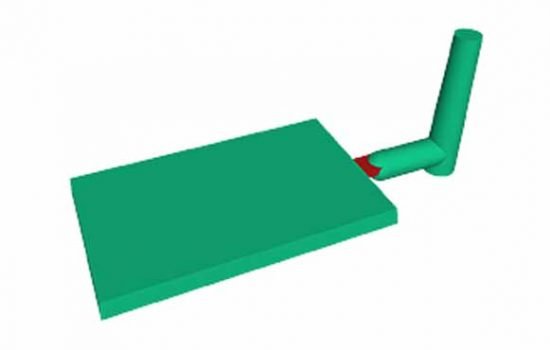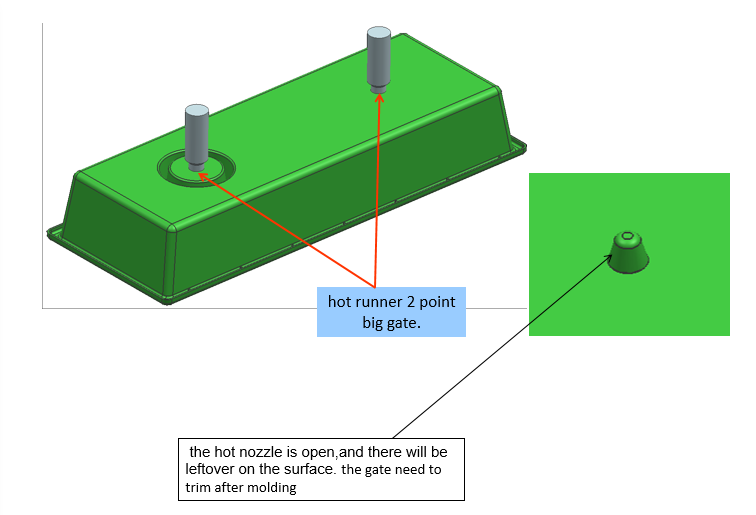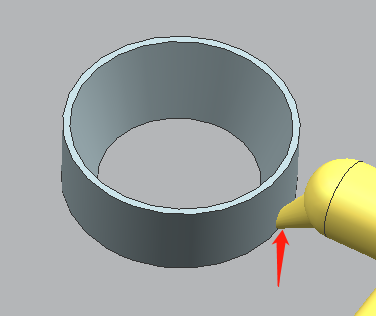Injection molding is a manufacturing process that involves injecting molten material into a mold cavity. It’s used to create parts of various shapes and sizes and can be used with a wide range of materials such as metals, plastics, rubbers, and composites. The key part of the injection molding process is the gate – this is where the melted material enters the cavity and starts forming the desired shape. This article will provide an overview of what gates are in injection molding and how they work.
Definition of Injection Molding Gate
An injection molding gate is a cavity or opening at the beginning of a runner system in order to allow molten plastic to flow into the cavities of an injection mold. It is one of the most important processes in injection molding, as it affects all other characteristics of the final product, such as size, shape, and surface finish.
Importance of Gates for Injection Molding
The gate in injection molding serves two main purposes: to control the rate at which molten plastic enters into the cavities and also to ensure that no air is trapped within the molded part, which could lead to defects such as shrinkage or warping of the finished product.
In addition, the gate size and position can also be used to control the flow of plastic inside the mold and therefore, optimize filling. This is particularly important when filling complex parts with intricate details. The gate size will affect timing, fill pressure, cooling, and packing.
Types of Gates used in Injection Molding
There are several different types of gates that can be used in injection molding, including edge gates, pin-point gates, channel gates, and direct gates.
Edge Gate
Edge gates are typically the simplest type of gate and they usually require minimal modification to the existing tooling. These gates are placed along the edge or shoulder of the part, and they channel molten plastic into the runner system from there.

- Pros: Low cost, easy to set up
- Cons: Poor cosmetic appearance, limited runner size control
Pin-point Gate
Pin-point gates are similar to edge gates in that they also require minimal modification to existing tooling. The difference is that pin-point gates have a smaller opening than edge gates, allowing for more precise control of the molten plastic flow.
- Pros: Improved cosmetic appearance, greater runner size control
- Cons: not easy to machine, higher cost
Channel Gate
Channel gates are created by cutting a groove in the plastic part, and they typically require more modification to existing tooling than edge or pin-point gates. This type of gate is ideal for applications where surface finish must be maintained along the edges of the part.
- Pros: Improved cosmetic appearance, better runner size control
- Cons: Higher cost, more complex setup
Direct Gate
Direct gates are the most common type of gate used in injection molding. They involve injecting plastic directly into a cavity from the injection nozzle. This is the most efficient way of injecting plastic into a mold and it requires very minimal tooling modification. Direct gates are placed near the center of the part.
- Pros: Quick setup, uniform plastic flow, improved cosmetic appearance, more precise control over runner size
- Cons: the gate has to be removed by hand
Hot Runner- Valve Gate

Hot runner gates are the most advanced type of gate used in injection molding. These gates allow for a greater degree of control over the molten plastic flow, as they can be programmed to open and close at different times during the injection process.
- Pros: Improved cosmetic appearance, greater degree of control over runner size
- Cons: Higher cost, more complex setup and maintenance
Submarine Gate

Submarine gates are placed near the base of the part, and they require more modification to existing tooling than any other type of gate. This type of gate is ideal for applications where a large amount of molten plastic is needed to fill the cavities in a mold as quickly as possible.
- Pros: Rapid filling of cavities, improved part consistency;
improved appearance and the gate can be pulled off automatically when ejecting.
- Cons: hard to machine, more complex setup, longer time to take
Factors to Consider When Selecting an Injection Molding Gate
When selecting a gate for an injection molding project, there are several important factors to consider, such as the size of the part, type of plastic being used, desired surface finish, flow rate requirements and production speeds. Additionally, it is important to evaluate the existing tooling that will be used in order to determine what type of gate will work best. The shape or size of the part and the type of plastic being used may influence which gate is most appropriate for a given project.
- Appearance: The type of gate chosen should also depend on the desired surface finish of the part. For example, channel gates are better suited for parts with intricate or detailed surfaces, while edge and pin-point gates are better suited for parts with smooth finishes.
- Flow Rate: The flow rate requirements must also be taken into consideration when selecting a gate for an injection molding project. Different gates have varying flow rates, so it is important to select a gate that can accommodate the required plastic volume.
- Product Structure: In addition, the structure of the product must be taken into account when selecting a gate for an injection molding project. Some gates are better suited for thin-walled parts than others, and some may be more suitable for larger products.
- Plastic type: Lastly, the type of plastic being used should be considered when selecting a gate. Different plastics have different melting points and viscosities, so it is important to select a gate that can handle the specific properties of the chosen plastic.
By considering these factors when selecting a gate for an injection molding project, you can ensure that you are choosing the gate which will best suit the product’s requirements and increase your chances of success.
Common Mistakes to Avoid While Setting Up an Injection Molding Gate
When setting up an injection molding gate, there are several common mistakes that can occur if proper care is not taken when designing and configuring a gate for an injection molding project:
– Incorrect Placement: If not placed correctly, the gate can create a weak spot on the part which can lead to poor flow and an inferior surface finish.
– Inadequate Attachment Points: Incorrect attachment points for the gate can cause warping or other structural problems with the finished product.
– Lack of Ventilation: Insufficient ventilation can cause air pockets in the finished part, resulting in a weak or distorted shape.
– Insufficient Plastic Flow: Without a sufficient flow of plastic material through the gate, parts may not fill completely and have an incomplete shape.
– Improper Gate Size Selection: An incorrect gate size can lead to poor distribution of material and uneven surfaces.
By avoiding these common mistakes, manufacturers can ensure that the injection molding process runs smoothly and produces high-quality parts. Taking the time to accurately design and configure an injection molding gate can have a significant impact on the success of a project and improve the overall quality of the finished product.
Design Considerations for Injection Molding Gate
To ensure the success of an injection molding project, careful consideration should be given to several design factors when choosing and setting up a gate for the product. These include:
– Gate Type: Certain gate types are better suited for particular materials or applications than others. Hot runner systems, for example, can reduce cycle times while cold runners allow for greater control over the flow of material.
– Gate Location: The placement of a gate can have an effect on the strength and integrity of a part, as well as its aesthetics. Care should be taken to ensure it is placed in a suitable location that will not create weak spots or other structural issues.
– Gate Size: The size of the gate should be carefully selected to ensure that it is large enough to provide a good feed of material, but not so large as to leave an excessive “flash” on the part.
– Ventilation: Proper ventilation is essential for ensuring that air pockets are minimized and parts have a consistent shape and finish.
By taking these design considerations into account, manufacturers can ensure that their injection molding projects are successful and produce high-quality parts. With the right gate selection and setup, the possibilities of what can be molded with injection molding are endless.
Conclusion
Injection molding is a versatile and cost-effective manufacturing process, but it is important to carefully select and set up an injection molding gate. By considering factors such as gate type, location, size, and ventilation when choosing a gate for an injection molding project, manufacturers can ensure that their parts have the best chance of success and are made with a high degree of quality. With the right gate in place, injection molding can be used to create a wide variety of parts with accuracy and precision.

